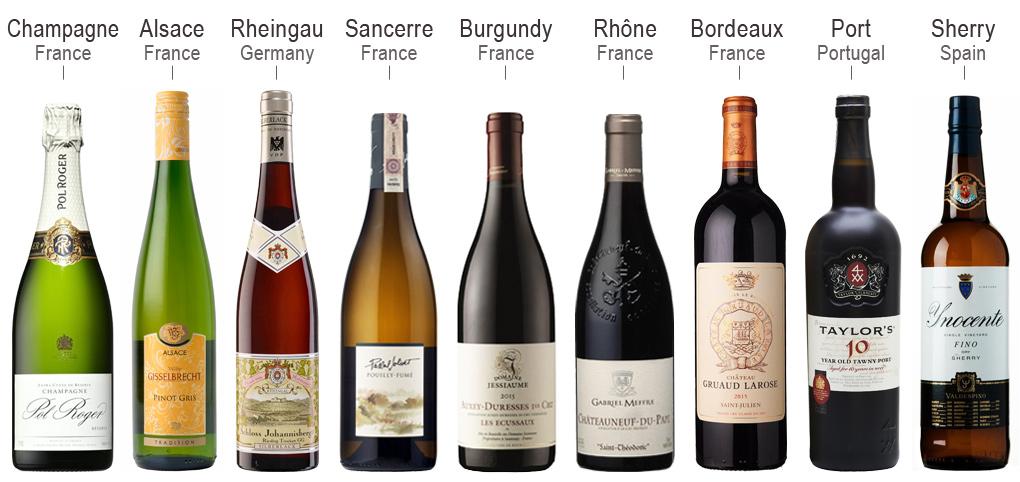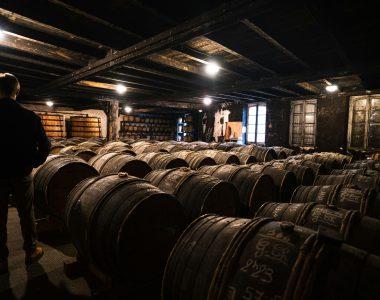
Wine labels can often seem like a complex puzzle, especially for those new to the world of wine. However, with a little knowledge, you can decode the information on a wine bottle to make informed choices that suit your taste and occasion. This guide will help you understand the key elements of wine labels, including what they mean and how to use them to your advantage.
1. Producer or Brand Name
The producer or brand name is usually displayed prominently at the top or center of the label. This is the name of the winery or the company that produced the wine. Recognizing reputable producers can help you choose wines of consistent quality. For example, a bottle labeled “Robert Mondavi” indicates it comes from a well-known and respected winery in Napa Valley.
2. Grape Variety
The grape variety tells you what type of grape was used to make the wine. Common varieties include Cabernet Sauvignon, Chardonnay, Merlot, Pinot Noir, and Sauvignon Blanc. This information is crucial because different grape varieties have distinct flavors and characteristics. For instance, a wine labeled “Chardonnay” will typically be a white wine with flavors of apple, pear, and sometimes buttery notes if it has been aged in oak.
3. Region or Appellation
The region or appellation indicates where the grapes were grown. This can range from broad designations like “California” to specific regions such as “Bordeaux” or “Tuscany.” Some regions have strict regulations governing wine production, which can be a sign of quality. For example, wines from the “Napa Valley” appellation must adhere to specific standards that help ensure a certain level of quality and character.
4. Vintage Year
The vintage year refers to the year the grapes were harvested. This is important because the weather conditions in any given year can affect the quality and characteristics of the wine. A 2015 vintage from Bordeaux, for example, may taste different from a 2016 vintage due to variations in climate. Non-vintage wines, labeled “NV,” are blends of wines from multiple years and aim for consistency rather than highlighting a specific year’s characteristics.
5. Alcohol by Volume (ABV)
The ABV indicates the percentage of alcohol in the wine. This can give you an idea of the wine’s body and intensity. Wines with higher ABV (14% and above) tend to be fuller-bodied and more robust, while those with lower ABV (12% and below) are usually lighter and more refreshing. For instance, a 13.5% ABV on a Pinot Noir suggests a medium-bodied wine with balanced intensity.
6. Appellation of Controlled Origin
In some regions, wines are labeled with an appellation of controlled origin, such as the French “Appellation d’Origine Contrôlée” (AOC), the Italian “Denominazione di Origine Controllata” (DOC), or the Spanish “Denominación de Origen” (DO). These labels signify that the wine meets specific regulations regarding grape varieties, production methods, and quality standards. A wine labeled “AOC Bordeaux” indicates it adheres to the strict guidelines set by the Bordeaux region.
7. Quality Classification
Many wine-producing countries have quality classifications that indicate the wine’s ranking within a region’s hierarchy. In Bordeaux, for instance, classifications like “Grand Cru” or “Premier Cru” denote higher-quality wines. In Italy, you might see “DOCG” (Denominazione di Origine Controllata e Garantita), which is a higher classification than “DOC.” Understanding these classifications can help you gauge the potential quality and prestige of a wine.
8. Estate Bottled
If a wine label includes the term “estate bottled” or the equivalent in other languages (e.g., “Mis en Bouteille au Domaine” in French), it means the wine was grown, produced, and bottled on the same estate. This often implies greater control over the winemaking process and can be a sign of quality. For example, “Estate Bottled” on a Napa Valley wine suggests it was entirely crafted by the winery from vineyard to bottle.
9. Tasting Notes and Other Descriptions
Some wine labels include tasting notes or descriptions that give you an idea of the wine’s flavor profile. These can mention aromas, flavors, and the wine’s body. For instance, a label might say, “Aromas of blackberry and plum with hints of vanilla and spice,” providing a snapshot of what to expect when you taste the wine.
10. Volume
The volume indicates the amount of wine in the bottle, usually shown in milliliters (ml). A standard wine bottle is 750 ml, but wines can also come in other sizes, such as half-bottles (375 ml) or magnums (1.5 liters).
11. Producer’s Address and Bottling Information
The label often includes the producer’s address and bottling information, which can be helpful if you want to learn more about the winery or contact them. This information might also include the phrase “Imported by,” indicating the distributor for imported wines.
sweet flavors and longevity. In recent years, the Douro Valley has also gained recognition for its dry red and white wines, which showcase the region’s unique terroir and winemaking traditions.


